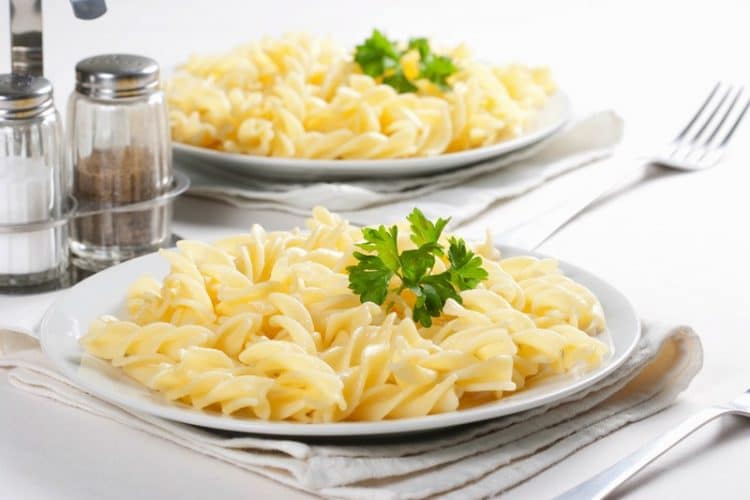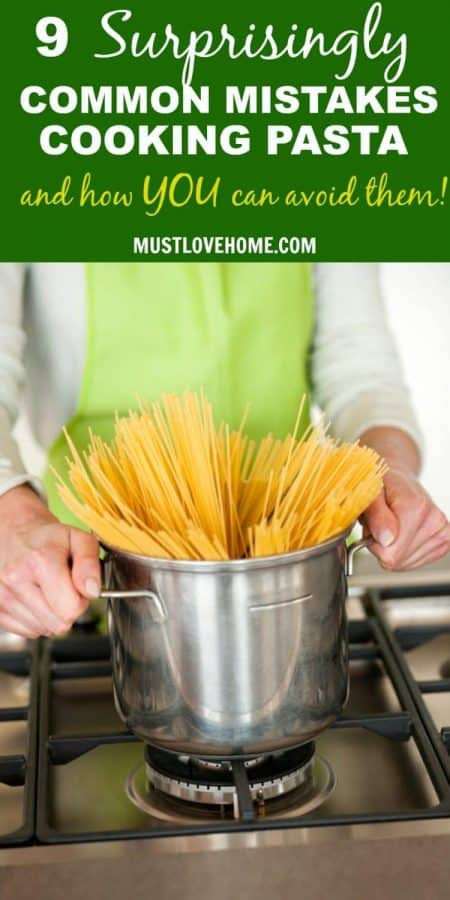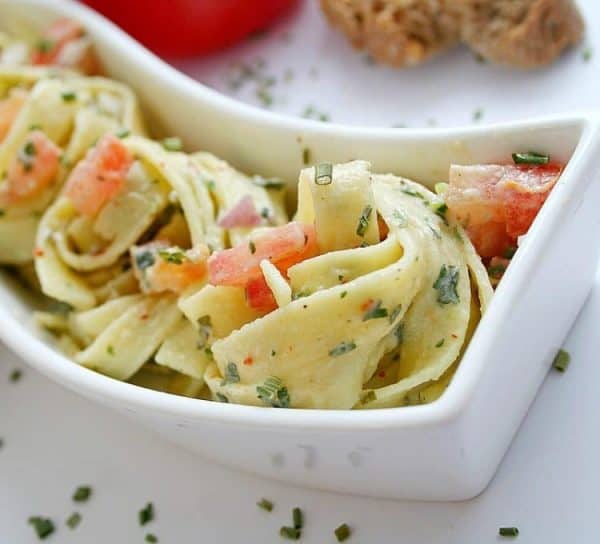Today I decided to take a break from cooking and write about something close to my heart…pasta! Well, this is really about how not to muck up cooking something with such potential for deliciousness, but you get what I’m saying. If you are going to make the effort to put together a mouth-watering noodle dish, it should be worth the effort. And that means bringing your pasta to smooth, velvety perfection. To do that you will need to avoid the pitfalls of dry pasta cooking, cardinal sins that I just call the 9 Surprisingly Common Mistakes Cooking Pasta!
1. Not Using Enough Water And/Or a Pot that is too small
Use enough cold, fresh water and a big enough pot that once the pasta begins to cook and expand, there will still be plenty of room for the noodles to move freely. You may be tempted to use a smaller pot, meaning less water and less time to boil and dinner faster on the table – but that could be a big mistake! The key to how much water is that you want enough water to balance the heat once the pasta is added, allowing it to come back to a boil quickly. The rule of thumb is at least 4 quarts (1 gallon) of water for every pound of pasta.
2. Leaving Out Good Ole Fashioned Salt.
Salting the water is your only opportunity to season the pasta itself. The water needs to “taste like the sea,” in order to flavor the pasta, though you will probably have your own preference. A general guideline is 1 Tablespoon of salt for every 4 quarts (1 gallon) of water.
3. Not Waiting for a Rapid Boil.
Starches absorb water instantly so you want the water temperature to be extremely hot to begin cooking the noodles properly. Noodles that are added before the water has come to a rapid boil will be soggy and may not ever reach that perfect al dente you are looking for.
4. Forgetting to Stir and Allowing the Stick.
As soon as you drop the pasta in the water, stir it rapidly. Stirring will knock off some of the surface glue-like starch granules on the pasta. If you don’t stir, pieces of pasta that are touching one another literally will cook together, and become an unappetizing clump of pasta that you really don’t want!
5. Adding Oil to the Pot.
Yes, oil can keep the pasta from sticking, but this technique works a little too well! Pasta that’s cooked in oily water will become oily itself. You will have pasta where the sauce slides right off, doesn’t get absorbed, and then you have flavorless pasta. And who wants that after all the time you spent creating the perfect sauce to go with those noodles!!
6. Rinsing The Pasta After Draining.
Rinsing the pasta after cooking is a bad idea for a couple of reasons. It will cool the pasta and prevent the pasta from absorbing the sauce. Remember – hot pasta absorbs hot sauce! Also, the tiny amount of starch left on the pasta by the cooking water can help thicken your sauce slightly.
7. Draining the Pasta Dry.
Drain your pasta enough to remove most of the water, but don’t let drained pasta sit in the colander and “dry off”. As it cools, the starches will firm up ,the pasta will stick together and when you try to add it to the sauce you will have a bowl shaped clump that will be hard to undo.
8. Not Saving Some of the Pasta Cooking Water.
Before you drain your pasta ladle a cup of cooking water into a bowl or measuring cup and reserve it for your sauce. Adding a little of the pasta water to your sauce when you add the noodles helps the sauce adhere better to the pasta, and gives you some of that awesome cooking water if you need to “thin” out the sauce later.
9. Adding Sauce to the Pasta – instead of the other way around
It is not just the flavor of the sauce that matters, but when and how the sauce and the pasta get combined. Toss hot pasta into the hot sauce quickly—without rinsing it—so the pasta absorbs more sauce and flavor. The second the pasta is done, scoop it out of the water with a strainer, or over the sink in a colander. I let the pasta drain for a few seconds, give it a couple of shakes, and then I dump it into the hot sauce and stir well. I then let the pasta sit, covered, to absorb the sauce for a minute or two, and then remove the lid, stir again, and serve instantly.
So next time you’re in the mood for pasta, remember these simple tips for the best method ever to cook classic pasta.









